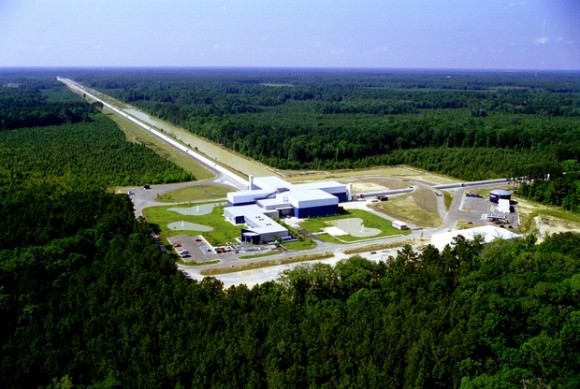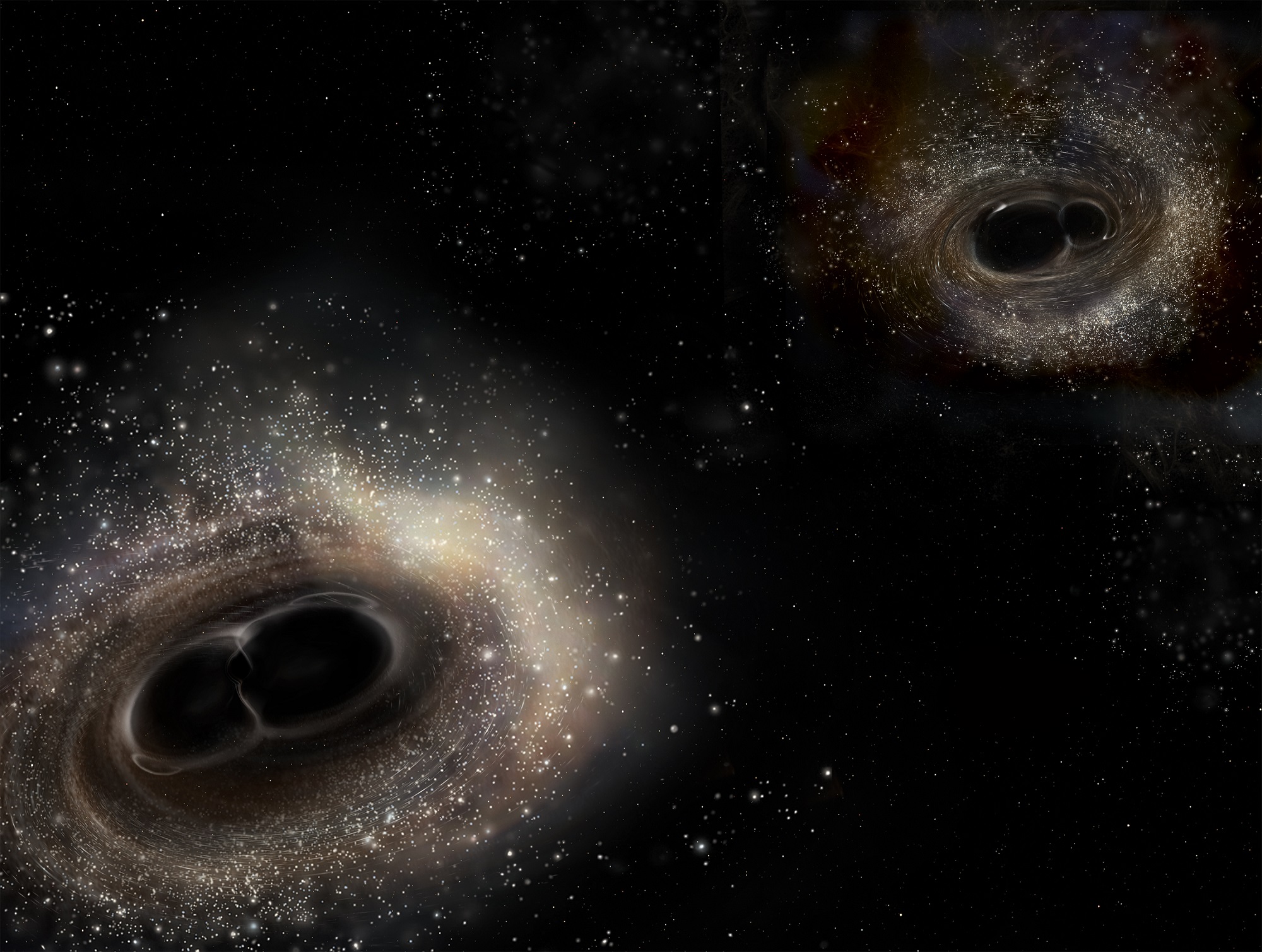A third gravitational wave has been detected by the Laser Interferometer Gravitational-wave Observatory (LIGO). An international team announced the detection today, while the event itself was detected on January 4th, 2017. Gravitational waves are ripples in space-time predicted by Albert Einstein over a century ago.
LIGO consists of two facilities: one in Hanford, Washington and one in Livingston, Louisiana. When LIGO announced its first gravitational wave back in February 2016 (detected in September 2015), it opened up a new window into astronomy. With this gravitational wave, the third one detected, that new window is getting larger. So far, all three waves detected have been created by the merging of black holes.
The team, including engineers and scientists from Northwestern University in Illinois, published their results in the journal Physical Review Letters.
When the first gravitational wave was finally detected, over a hundred years after Einstein predicted it, it helped confirm Einstein’s description of space-time as an integrated continuum. It’s often said that it’s not a good idea to bet against Einstein, and this third detection just strengthens Einstein’s theory.
Like the previous two detections, this one was created by the merging of two black holes. These two were different sizes from each other; one was about 31.2 solar masses, and the other was about 19.4 solar masses. The combined 50 solar mass event caused the third wave, which is named GW170104. The black holes were about 3 billion light years away.
“…an intriguing black hole population…” – Vicky Kalogera, Senior Astrophysicist, LIGO Scientific Collaboration
LIGO is showing us that their is a population of binary black holes out there. “Our handful of detections so far is revealing an intriguing black hole population we did not know existed until now,” said Northwestern’s Vicky Kalogera, a senior astrophysicist with the LIGO Scientific Collaboration (LSC), which conducts research related to the twin LIGO detectors, located in the U.S.
“Now we have three pairs of black holes, each pair ending their death spiral dance over millions or billions of years in some of the most powerful explosions in the universe. In astronomy, we say with three objects of the same type you have a class. We have a population, and we can do analysis.”

When we say that gravitational waves have opened up a new window on astronomy, that window opens onto black holes themselves. Beyond confirming Einstein’s predictions, and establishing a population of binary black holes, LIGO can characterize and measure those black holes. We can learn the holes’ masses and their spin characteristics.
“Once again, the black holes are heavy,“ said Shane Larson, of Northwestern University and Adler Planetarium in Chicago. “The first black holes LIGO detected were twice as heavy as we ever would have expected. Now we’ve all been churning our cranks trying to figure out all the interesting myriad ways we can imagine the universe making big and heavy black holes. And Northwestern is strong in this research area, so we are excited.”
This third finding strengthens the case for the existence of a new class of black holes: binary black holes that are locked in relationship with each other. It also shows that these objects can be larger than thought before LIGO detected them.
“It is remarkable that humans can put together a story and test it, for such strange and extreme events that took place billions of years ago and billions of light-years distant from us.” – David Shoemaker, MIT
“We have further confirmation of the existence of black holes that are heavier than 20 solar masses, objects we didn’t know existed before LIGO detected them,” said David Shoemaker of MIT, spokesperson for the LIGO Scientific Collaboration . “It is remarkable that humans can put together a story and test it, for such strange and extreme events that took place billions of years ago and billions of light-years distant from us.”

“With the third confirmed detection of gravitational waves from the collision of two black holes, LIGO is establishing itself as a powerful observatory for revealing the dark side of the universe,” said David Reitze of Caltech, executive director of the LIGO Laboratory and a Northwestern alumnus. “While LIGO is uniquely suited to observing these types of events, we hope to see other types of astrophysical events soon, such as the violent collision of two neutron stars.”
A tell-tale chirping sound confirms the detection of a gravitational wave, and you can hear it described and explained here, on a Northwestern University podcast.
Sources:


Can’t wait to see what they turn up next. Really curious about how these intermediate sized black holes might have formed. Could they be the remnants of population 3 stars or possibly primordial black holes? Or perhaps they formed from the merger of a few “normal” stellar mass black holes? Do we know how long it take for the orbits of binary black holes to decay? I guess that that would put constraints on how common that last idea could be.